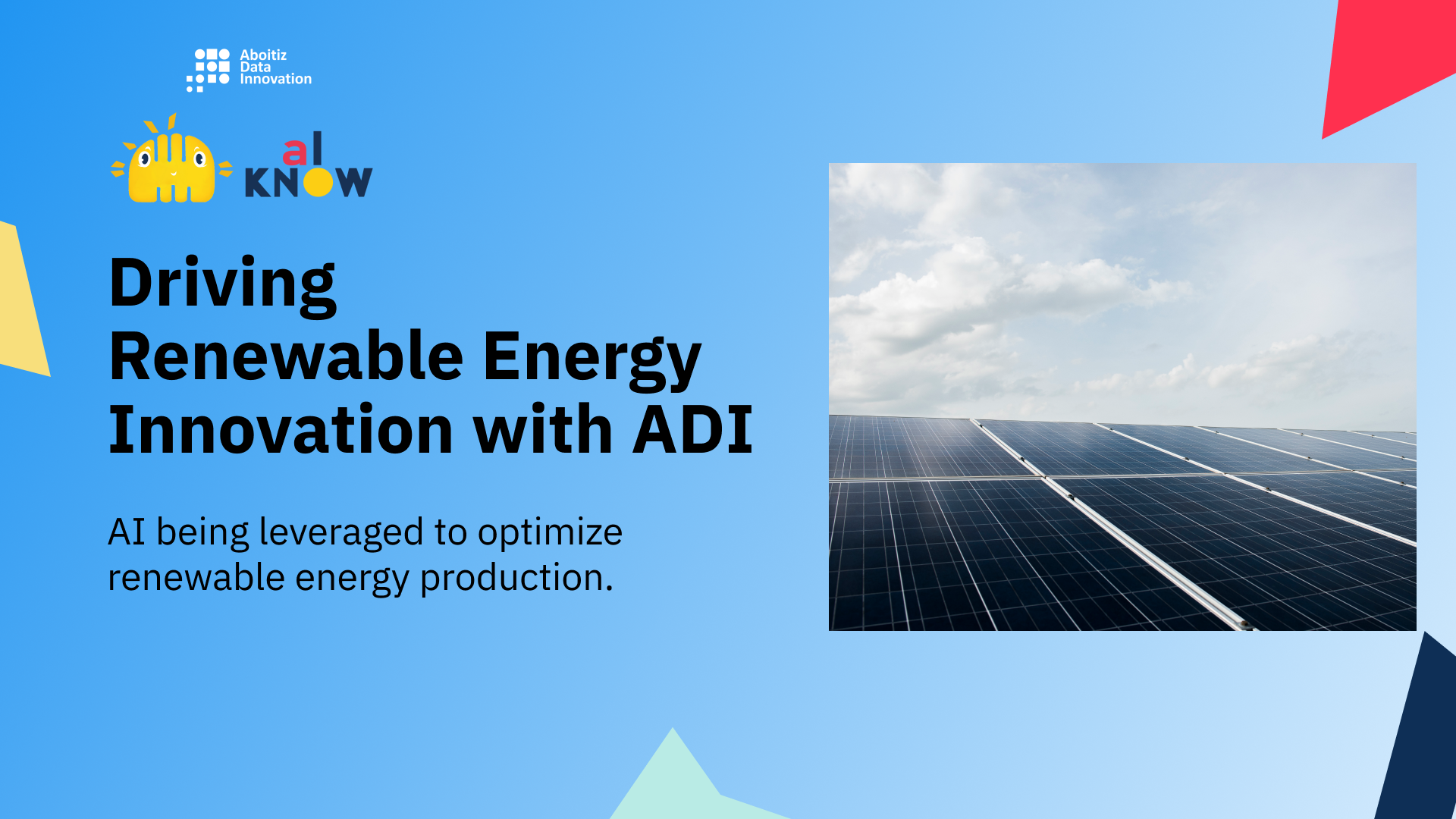
Driving Renewable Energy Innovation with ADI
ADI drives renewable energy innovation with AI & data science, optimizing production & navigating weather resilience.
There is a clear global movement towards renewable sources. However, this shift brings unique challenges in terms of electricity expenses and environmental consequences. ADI understands these dynamics and is committed to employing AI and data science to address them effectively.
Navigating Weather-driven Fluctuations
As the energy industry embraces renewable sources like wind, solar, and hydroelectric power, optimizing production becomes more complex. Weather-driven fluctuations exert substantial influence on output levels, making precise predictions essential for investment validation and market competitiveness. In this dynamic landscape, AI and data science emerge as indispensable tools, empowering utility companies to navigate these complexities confidently.
Weather-Driven Production Prediction Modeling for Renewables
By harnessing foundational data science techniques such as hybrid modeling and historical weather pattern analysis, utility companies can forecast power output levels more accurately.
For instance, the solution involves building multiple generation schedules that adapt to weather conditions, particularly for wind and solar energy. By integrating existing weather simulation models with AI-driven forecasting techniques, utility companies can optimize power commitments and improve overall performance.
The Value Proposition
Artificial Intelligence (AI) offers transformative potential for optimizing operations. By leveraging weather and climate data, AI enhances decision-making for deploying and configuring renewable energy technologies such as solar, wind, and hydro. This approach not only improves energy output and reduces costs but also supports strategic adaptations to climate change. Through advanced predictive modeling, real-time monitoring, and dynamic pricing strategies, AI helps manage the impacts of weather and environmental factors, ensuring more efficient and resilient energy systems.
1. Leveraging Weather Patterns and Climate Shifts
AI significantly improves renewable energy operations by utilizing weather and climate data. Predictive models analyze historical and current weather conditions to pinpoint optimal locations and configurations for technologies like solar, wind, and hydro. High-resolution microclimate data allows for precise system adjustments, enhancing energy output and reducing costs. Additionally, AI aids in adapting to climate change by evaluating potential impacts and formulating strategies to address risks and seize new opportunities.
2. Anticipating the Effects of Inclement Weather
AI also enhances the management of inclement weather effects. Yield forecasting models use weather predictions to optimize energy storage and grid integration, helping to manage fluctuations in energy production. Risk assessments identify vulnerabilities to extreme weather events, enabling the development of effective contingency plans. Real-time monitoring systems powered by AI detect equipment anomalies during adverse conditions, facilitating prompt interventions to sustain operational efficiency.
3. Incorporating Environmental Factors into Pricing
Incorporating environmental factors into pricing strategies is another advantage of AI. Dynamic pricing models, which adjust based on real-time weather and energy demand, help maximize revenue and promote consumption during peak renewable production. Data analytics can quantify environmental benefits, supporting pricing strategies that appeal to sustainability-focused customers. AI also assists in carbon footprint analysis, identifying opportunities for emission reductions and potential carbon offset initiatives. Effective data management and ongoing model refinement are crucial for ensuring accuracy and efficiency in these AI-driven processes.
AI Innovating Energy for Tomorrow
While AI implementation in the energy sector presents exciting opportunities, it also comes with challenges. Data availability and quality are critical factors, particularly for historical performance data for renewables. ADI advocates for short-term data enrichment projects to initiate monitoring and improve data quality.
Investing in robust data architectures and infrastructure is essential to fully leverage AI capabilities. Developing native data environments, integrating weather forecasting models, and enhancing predictive analytics for maintenance and outage prediction are crucial steps.
By adopting AI-powered solutions, utility companies can effectively address cost, sustainability, and customer satisfaction challenges, moving towards a more efficient and sustainable future. ADI is dedicated to leading these advancements and shaping the future of energy production.


